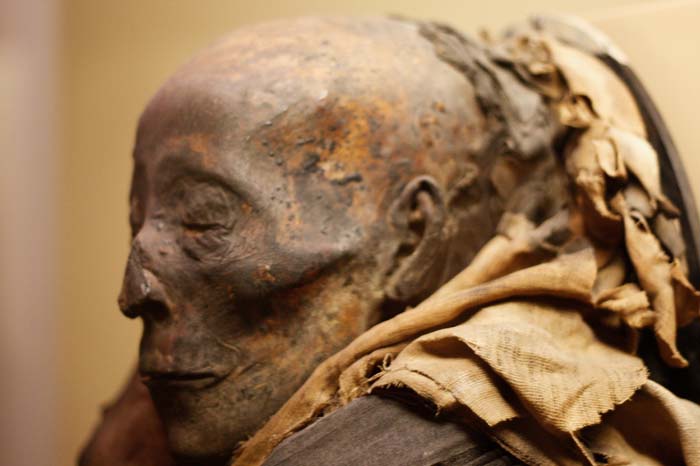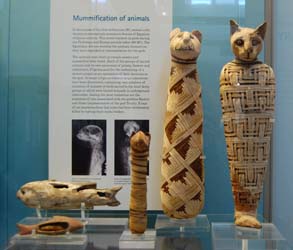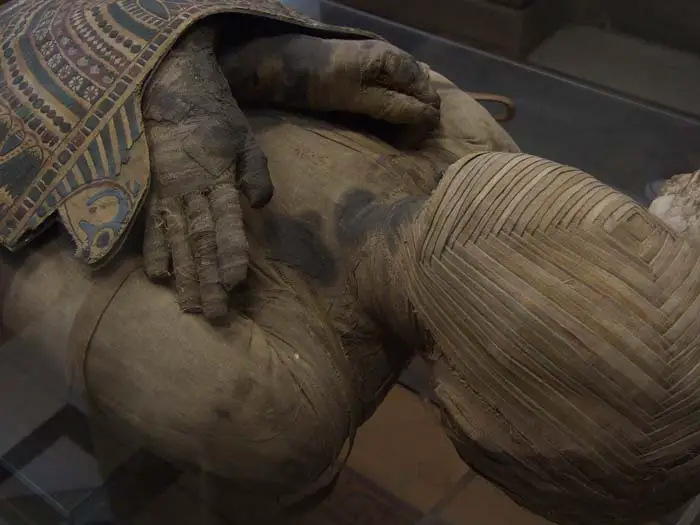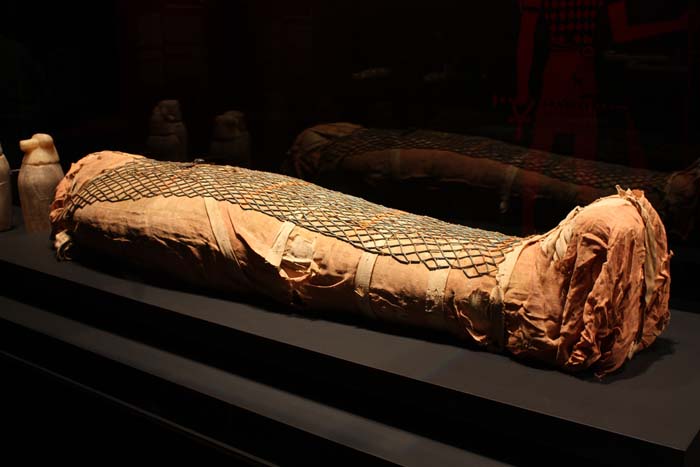Ancient Egyptian Mummies - for Kids
When important men and women, the pharaohs in particular, died in ancient Egypt, their bodies were mummified. This accomplished two purposes: it ensured that their bodies were clean and it ensured that their bodies were protected for the afterlife.
Embalming
The first step in the mummification process was embalming the body. The body was placed into an ibu, which means a place of purification. Then the embalmers washed the body with an aromatic wine in order to cleanse it. The body was then rinsed with water taken from the Nile River.
Many of the body's internal organs were removed in the next step. Those organs included the intestines, the liver, the lungs, and the stomach, and they were removed because, after death, they were the first of the human organs to begin decomposition. Those organs were then washed, dried, and placed in a vessel to dehydrate.
Since the heart was considered to be the center of the pharaoh's emotions and intellect, it was not removed from the body. The brain was extracted through the nasal passages.

© Bart Heird - Preserved Skin on an Egyptian Mummy's Head
The next step was to cover the body and stuff all of the cavities with a substance called natron, which is a drying agent. All bodily fluids and the cloths that were used in the initial steps of the embalming process were saved and buried with the mummy. The drying process took forty days and forty nights. Then the body was again washed with water that was taken from the Nile River.
After the second washing with water, the body was covered in oils. This ensured that the skin would remain pliable in the afterlife. The internal organs that were removed and dehydrated were then placed in linen and replaced in the body.
In ancient times, the internal organs were placed in separate containers that were buried with their respective bodies. Sometimes, they were placed in jars that had the appearance of the god supposed to protect each organ.
- Imsety tended the liver
- Hapy tended the lungs
- Qebehsenuef tended the intestines
- Duamutef tended the stomach

© Christina B Castro - Canopic Jars
Embalmers then stuffed the remaining cavity space with linen, sawdust, and so forth, in order for the body to regain its lifelike appearance. The body was then oiled again and then wrapped in linen.

©srgpicker - Cat mummy displayed in a museum
Mummification
The second step in the mummification process was wrapping the body. That was done in the following order:
- Head and neck
- Fingers and toes
- Arms and legs
- Torso and entire body
Each part of the body is wrapped with strips of fine linen. Amulets are placed between the layers in order to protect the body as it journeys through the afterlife. The Isis amulet protects the body, the Plummet amulet keeps the body balanced in the afterlife.

© Priscilla Jordão - Egyptian Mummy
During the wrapping process, a priest reads spells aloud. The intent is that these spells will ward off evil spirits and protect the person in his or her journey to the afterlife.
After the arms and legs are wrapped, they are bound together with a papyrus scroll placed in the hands. The scroll contains spells obtained from the Book of the Dead and are to ensure the protection of the person in the journey to the afterlife. As the body is wrapped, liquid resin is applied between the layers in order to bind the strips together.
Finally, a cloth is wrapped around the entire body and an image of the god Osiris is painted onto the surface. The last step is to wrap the mummy entirely with a large cloth, which is then secured in place with strips of linen.

© Paul Hudson - Diagonal wrapping pattern on a mummy
The mummification process is now complete and the mummy is ready to be placed inside the coffins.
Some of the most famous Egyptian mummies are:
- Akhenaten
- Amenhotep III
- Ramses I
- Thutmose II
- Tutankhamun

© Alvin Wong - Egyptian mummy exhibit in the National Museum of Singapore
